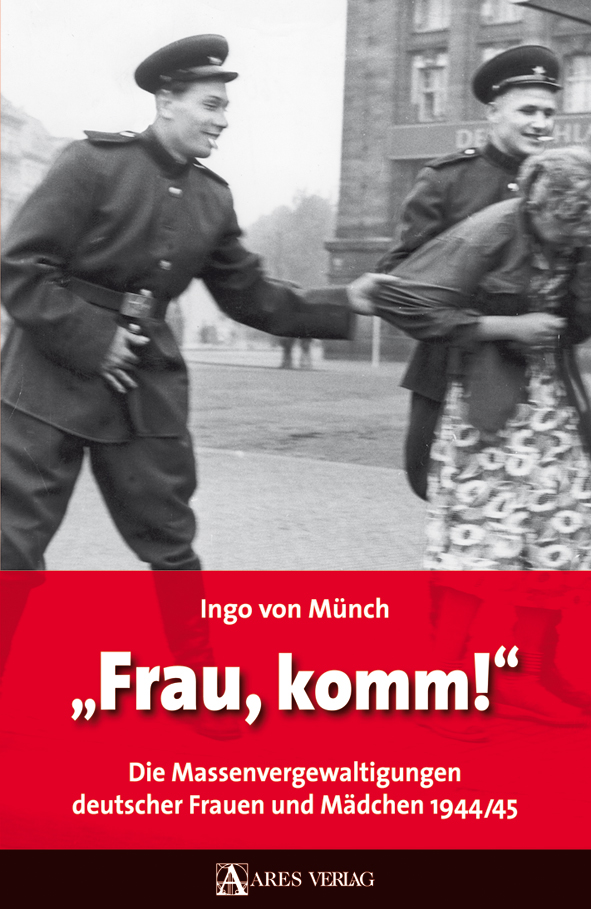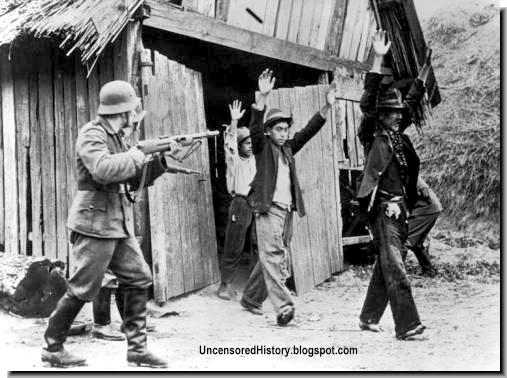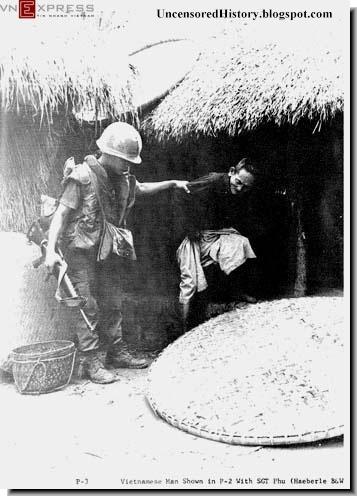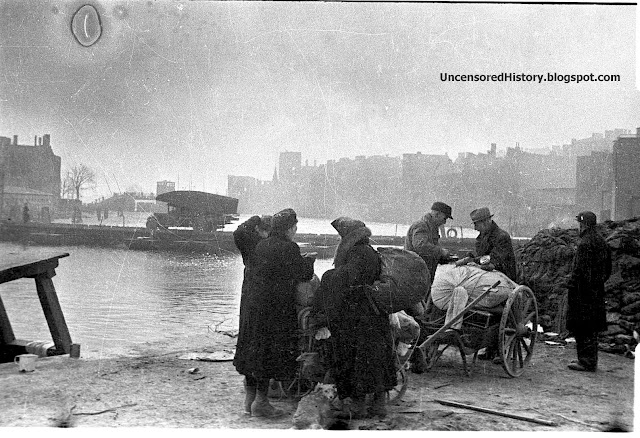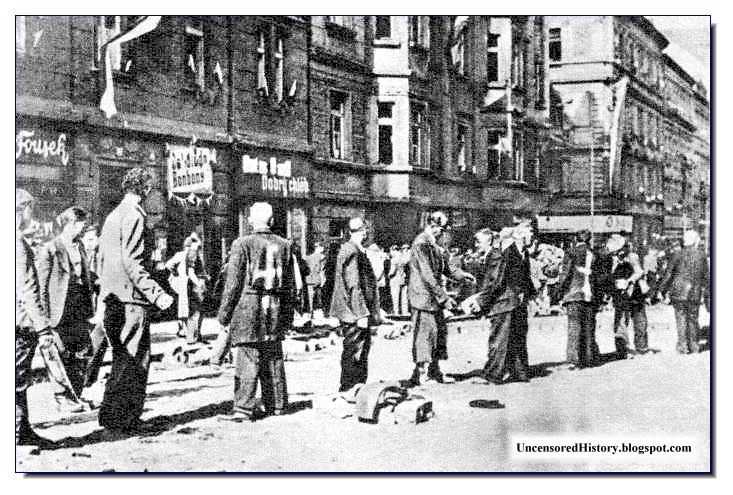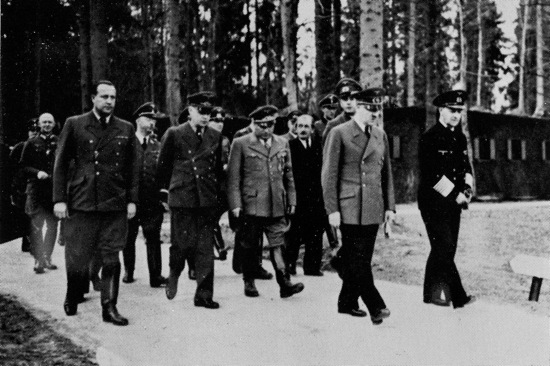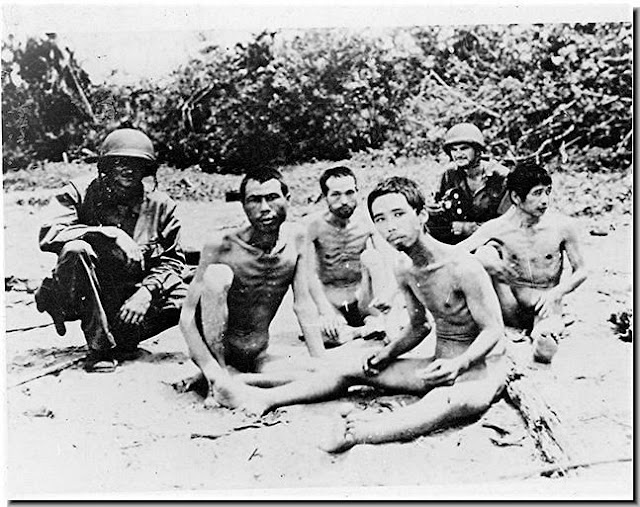 |
| Japanese POW's on a beach.The four unclothed men in the picture were Japanese soldiers captured by the U.S. Army in New Guinea. |
American soldiers in the Pacific often deliberately killed Japanese soldiers who had surrendered. According to Richard Aldrich, who has published a study of the diaries kept by United States and Australian soldiers, they sometimes massacred prisoners of war. Dower states that in "many instances ... Japanese who did become prisoners were killed on the spot or en route to prison compounds." According to Aldrich it was common practice for U.S. troops not to take prisoners. This analysis is supported by British historian Niall Ferguson,who also says that, in 1943, "a secret [U. S.] intelligence report noted that only the promise of ice cream and three days leave would ... induce American troops not to kill surrendering Japanese."
"We have this stereotypical idea that the Japanese were all cruel and robotic while the Allied forces were tough but fair in their treatment of the enemy. But I was very surprised by much of what I found and had to rethink all those stereotypes."
"Oh, we could take more if we wanted to," one of the officers replied. "But our boys don't like to take prisoners.
U. S. historian James J. Weingartner attributes the very low number of Japanese in U.S. POW compounds to two important factors, a Japanese reluctance to surrender and a widespread American "conviction that the Japanese were "animals" or "subhuman'" and unworthy of the normal treatment accorded to POWs. The latter reason is supported by Ferguson, who says that "Allied troops often saw the Japanese in the same way that Germans regarded Russians—as Untermenschen."
 |
| U.S. Marines inspect the bodies of three Japanese soldiers killed in the invasion at Peleliu island at the Palau group, September 16, 1944. (AP Photo/Joe Rosenthal) |
1943 diary of Eddie Stanton, an Australian posted to Goodenough Island off Papua New Guinea.
"Japanese are still being shot all over the place," he wrote. "The necessity for capturing them has ceased to worry anyone. Nippo soldiers are just so much machine-gun practice. Too many of our soldiers are tied up guarding them."
Memoir of a New Zealand soldier working with a Fijian regiment who came across the bodies of two native women, pegged out on an earthen mound. They had been "raped to death" by Japanese soldiers. Then they found a dead American soldier who had stakes driven through each shoulder and his hands cut off. "As we moved away again, one of my corporals said to me: "No more prisoners, turaga[sir]." I agreed with him.''
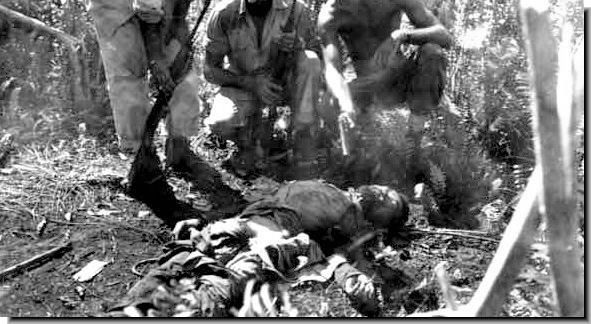 |
| A Dead Japanese Soldier Surrounded by American Soldiers |
Ulrich Straus, a U.S. Japanologist, suggests that frontline troops intensely hated Japanese military personnel and were "not easily persuaded" to take or protect prisoners, as they believed that Allied personnel who surrendered, got "no mercy" from the Japanese. Allied soldiers believed that Japanese soldiers were inclined to feign surrender, in order to make surprise attacks. Therefore, according to Straus, "[s]enior officers opposed the taking of prisoners, on the grounds that it needlessly exposed American troops to risks..."When prisoners nevertheless were taken at Gualdacanal, interrogator Army Captain Burden noted that many times these were shot during transport because "it was too much bother to take him in".
Richard Aldrich: The Faraway War
Ben Fenton, "American troops 'murdered Japanese PoWs'" Daily Telegraph (UK), 06/08/2005)
John W. Dower, 1986, War Without Mercy
Niall Ferguson, "Prisoner Taking and Prisoner Killing in the Age of Total War: Towards a Political Economy of Military Defeat", War in History, 2004,





























